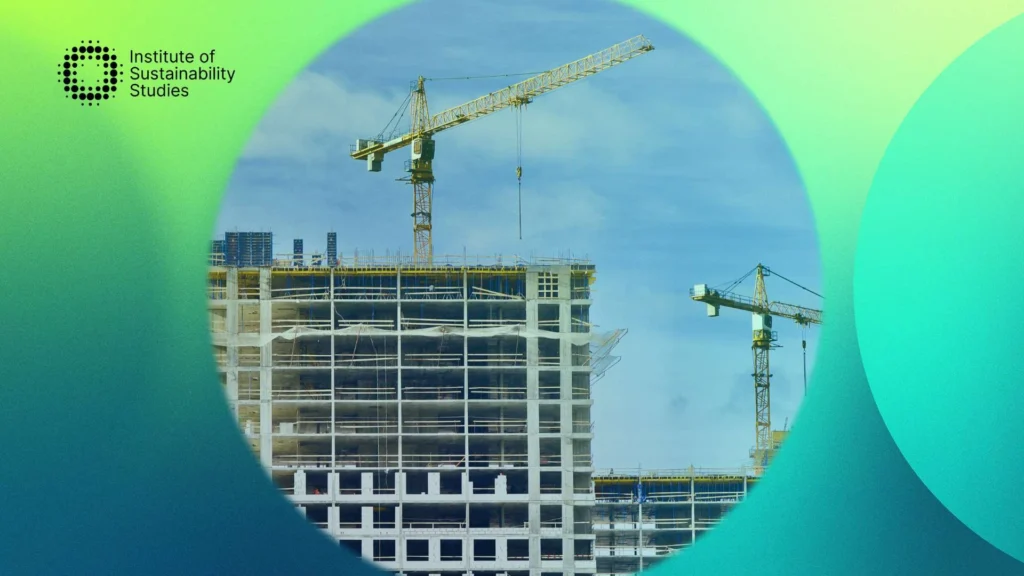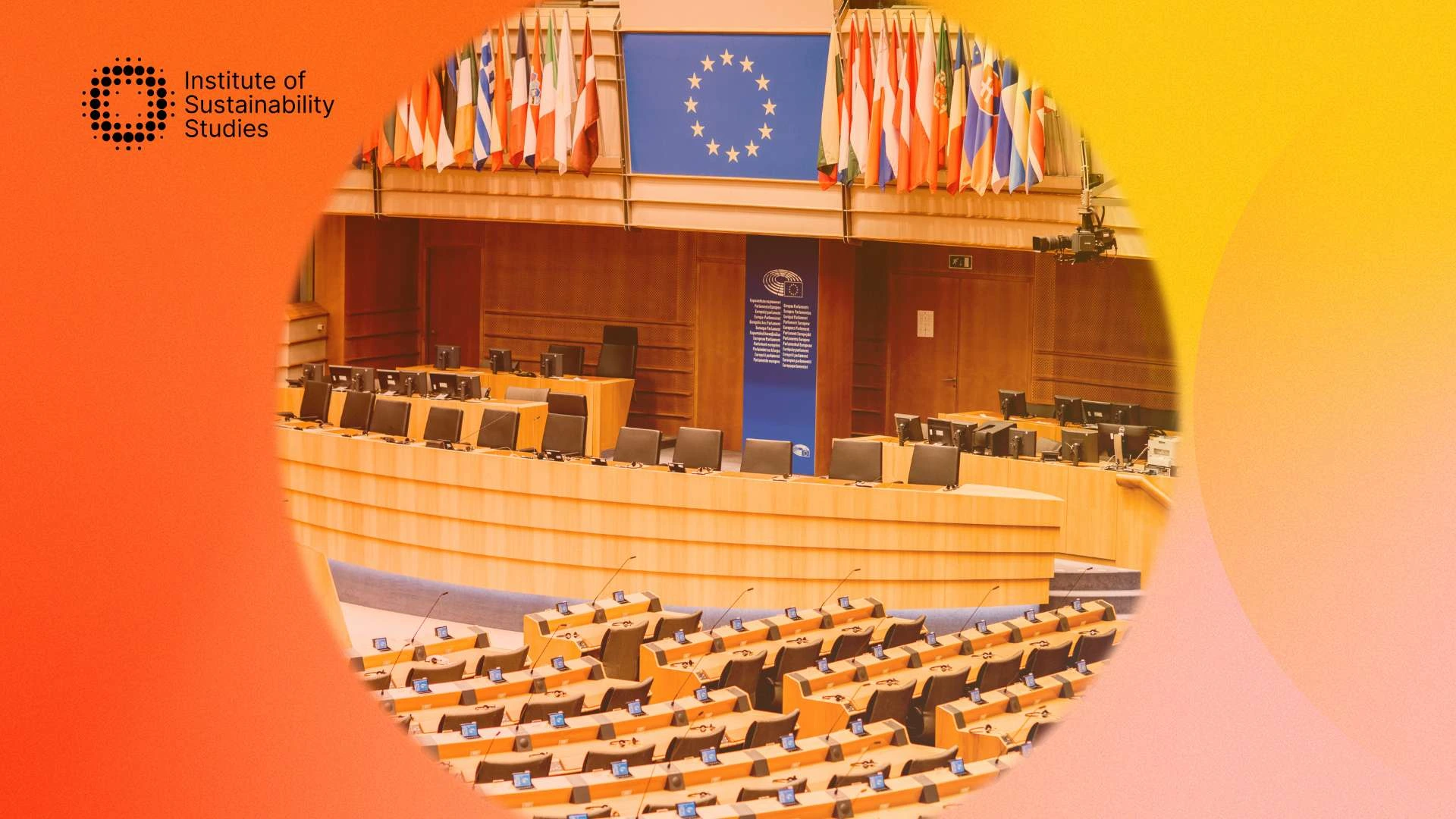Embodied carbon is increasingly becoming a critical focus for organisations committed to serious climate action. While many business sustainability strategies prioritise cutting operational emissions, the carbon embedded in materials and construction processes often goes unaddressed, despite contributing significantly to a building’s total environmental impact. For companies in manufacturing, construction, and infrastructure, understanding embodied carbon is essential to meeting net-zero goals and responding to rising stakeholder expectations.
What is embodied carbon?
Embodied carbon refers to the total greenhouse gas emissions associated with the production, transport, and installation of a material or product. It includes emissions from:
- Raw material extraction
- Manufacturing and processing
- Transportation to the site
- Construction and installation activities
Unlike operational carbon (which relates to emissions from the use of a building or product), embodied carbon is locked in from the beginning and cannot be changed once the product is made or the building is built.
Achieve measurable ROI with sustainability training that reduces costs and strengthens your market position
Why does it matter?
Embodied carbon is becoming an increasingly important focus as organisations seek to lower their overall environmental impact. Operational emissions have traditionally dominated climate strategies. Research finds that embodied carbon can now account for over 50 percent of a building’s total lifecycle emissions, especially in new construction.
The scale of impact is significant. According to the World Green Building Council, construction materials are responsible for around 11 percent of global carbon emissions. These emissions are effectively “locked in” at the point of construction or manufacture, making them irreversible and placing greater importance on early design and material decisions.
As countries and companies pursue net-zero targets, reducing embodied carbon is critical. It allows businesses, especially those in sectors like construction, infrastructure, and manufacturing, to lower their Scope 3 emissions, meet evolving regulations, and improve the sustainability profile of their assets from the outset.
Key strategies to reduce embodied carbon
Reducing embodied carbon requires intentional decisions throughout the design, construction, and procurement process.
Use low-carbon materials
One of the most direct ways to reduce embodied carbon is by selecting materials with lower emissions profiles. This includes using alternatives to carbon-intensive materials like traditional concrete and steel. Materials such as fly ash-blended concrete, mass timber, and low-carbon steel can significantly reduce overall impact. Choosing products with Environmental Product Declarations (EPDs) also enables transparent comparison between material options.
Optimise structural design
Reducing material use through efficient structural design is a powerful strategy. Engineers and architects can eliminate unnecessary bulk by using lighter materials, smaller cross-sections, and hollow-core slabs. Smart design reduces embodied carbon, cuts costs and shortens construction timelines.
Prioritise reuse and refurbishment
Retaining existing structures or components avoids the need for new materials altogether. Adaptive reuse projects, where old buildings are modernised rather than demolished, can drastically cut embodied carbon. Salvaging steel beams, timber, and bricks for reuse also helps conserve resources and reduce emissions from manufacturing.
Engage early with suppliers
Procurement teams can play a pivotal role by requesting low-carbon alternatives from suppliers. This includes specifying products with verified EPDs and prioritising manufacturers that use renewable energy, recycled inputs, or low-emission production processes. Early engagement enables better alignment with sustainability goals.
Design for circularity
Buildings designed with disassembly and material recovery in mind can contribute to a circular economy. This means ensuring that components can be easily removed, reused, or recycled at the end of their life. Designing for long-term adaptability also extends a building’s usefulness and reduces the need for premature demolition and rebuilding.
Conduct whole-life carbon assessments
Life Cycle Assessment (LCA) tools provide insights into the carbon footprint of materials from extraction through to disposal. Conducting whole-life carbon analysis at the early design stage helps identify carbon hotspots and make informed decisions that reduce environmental impact throughout the building’s lifecycle.
Educate and upskill teams
Reducing embodied carbon requires collaboration across design, construction, and procurement. Equipping teams with the skills to evaluate carbon impacts, select low-impact materials, and integrate sustainability into decision-making is essential. Sustainability education ensures that every stakeholder can contribute to meaningful carbon reductions.
Companies leading the way in low-carbon construction
A growing number of companies are leading the way in reducing embodied carbon, demonstrating how innovative design, material choices, and digital tools can reshape the future of low-impact construction.
Skanska – Pioneering near-zero embodied carbon construction
Skanska is a global construction and development firm renowned for integrating sustainability into its core strategy. Through its Deep Green framework, Skanska sets ambitious goals for reducing both operational and embodied carbon. One of its landmark projects, the Brent Civic Centre in the UK, was constructed using low-carbon materials such as FSC-certified timber and recycled aggregates. The project also incorporated off-site manufacturing, which contributed to reduced waste and emissions. Skanska continues to advocate for lifecycle assessments and net-zero pathways across its global portfolio.
Lendlease – Scaling mass timber in commercial buildings
Australian developer Lendlease has become a global advocate for mass timber construction, a method known to significantly reduce embodied carbon. International House Sydney is a flagship example – the first commercial building in Australia made entirely from cross-laminated timber (CLT). The use of prefabricated timber components lowered embodied emissions compared to concrete and steel and enabled faster construction with less on-site waste. Lendlease continues to expand this model across Europe and North America.
Arup – Engineering low-carbon design from the ground up
Engineering consultancy Arup has long been at the forefront of sustainable design, particularly in reducing embodied carbon. The firm integrates Whole Life Carbon Assessments (WLCA) into the design phase of major projects, enabling informed material choices and structural efficiencies. Arup has also published industry guidance on reducing embodied emissions and works with clients to achieve science-based carbon reduction targets. Their approach balances technical precision with practical application, driving meaningful impact across the built environment.
C40 reinventing cities – Driving circular construction innovation
The Reinventing Cities initiative by C40 Cities showcases sustainable urban development projects that prioritise low-carbon and circular construction. One leading example is L’Innesto in Milan, a social housing development designed with recycled concrete, responsibly sourced timber, and high-performance insulation. Passive design principles reduce operational energy use, while circular material flows help minimise embodied emissions. These projects demonstrate how cities can be laboratories for innovative, low-impact construction at scale.
Conclusion
By rethinking materials, engaging supply chains, and integrating circular design principles, businesses can reduce emissions, cut costs, and boost their sustainability credentials. Leading companies are already proving that low-carbon construction is both achievable and commercially smart.
Whether you’re in procurement, design, or operations, understanding embodied carbon is critical to future-proofing your organisation. Ready to build your entire organisation’s knowledge and capability? Explore our sustainability training for employees and get the skills needed to drive low-carbon innovation.










